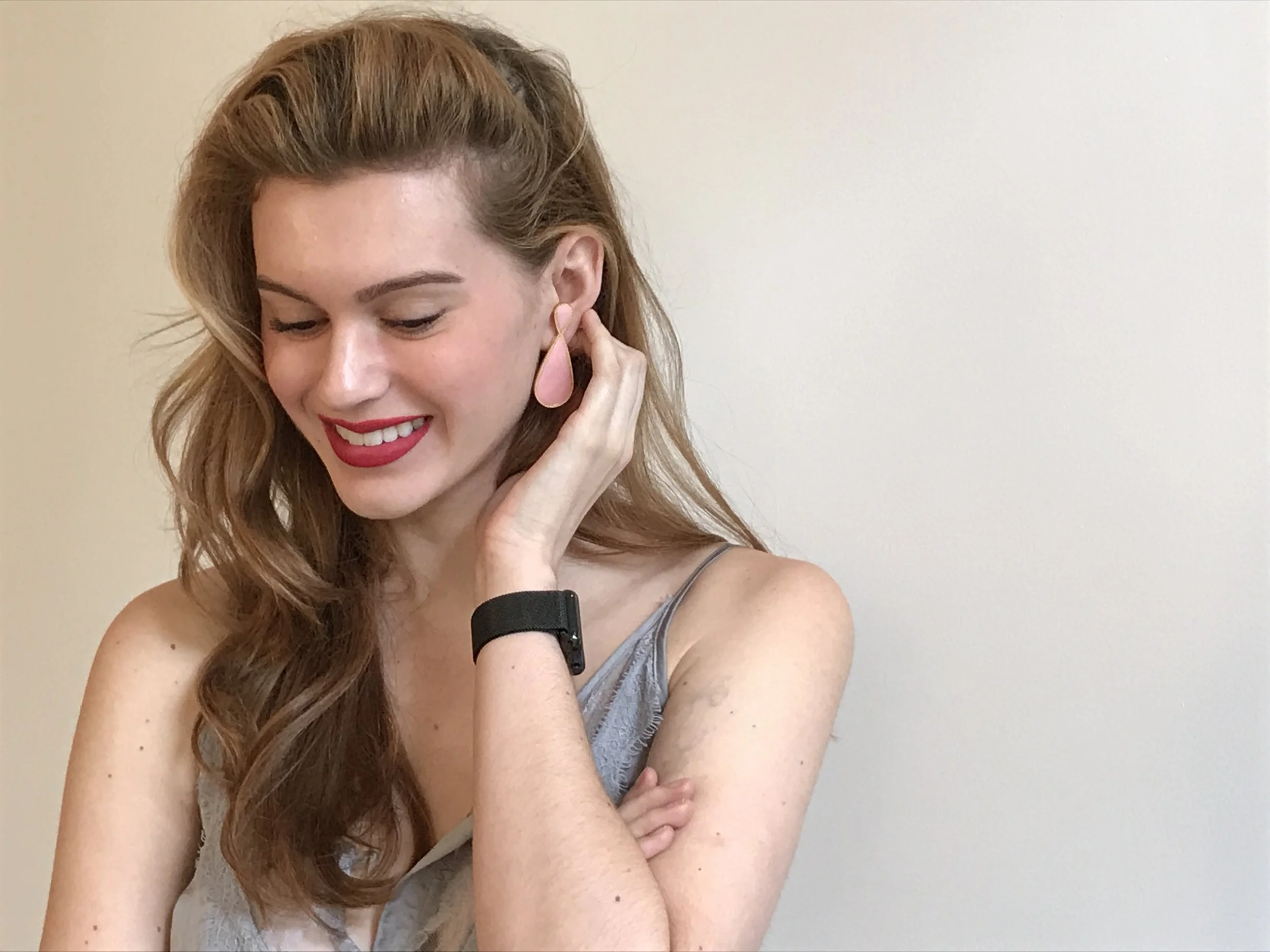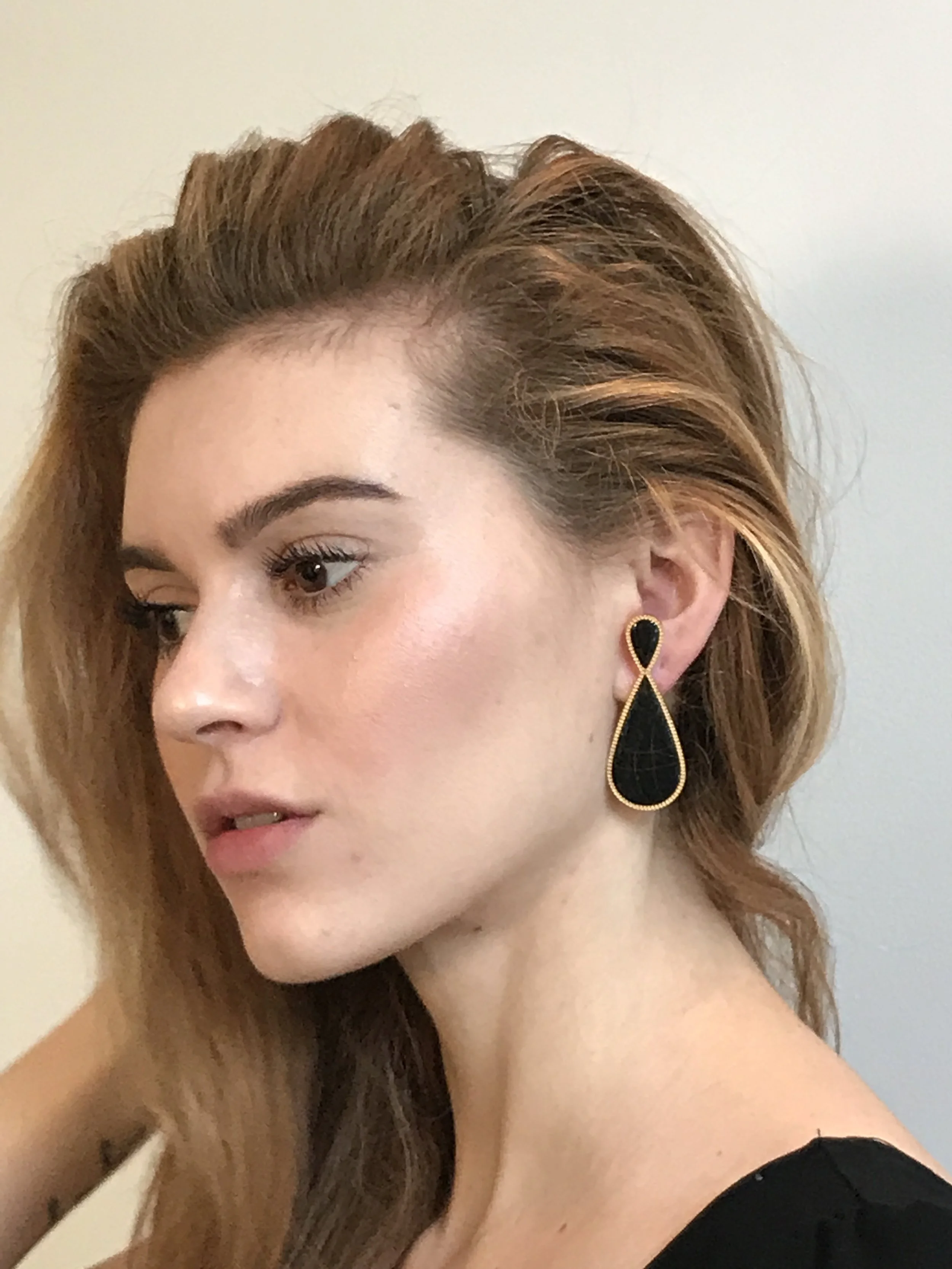WoW Women in WearableTech | Priti Moudgill and Sonal Budhiraja, co-founders of Peripherii
Interview by Marija Butkovic @MarijaButkovic
The founders of peripherii inc., both women, have advanced degrees in engineering across 3 different areas. Priti Moudgill’s engineering background includes degrees from Cornell University, Ithaca, NY and IIT Kanpur, India as well as engineer/scientist/engagement manager positions at IBM. She has a strong product instinct with consumer inventions licensed to Conair and Rubbermaid. She has also worked in the fashion industry designing and manufacturing high end accessories for clients such as Bergdorfs, Theory, Holt Renfrew, Tsum, etc. Sonal Budhiraja has a graduate degree in Electrical Engineering from LSU and B.Tech from NITK, India. For her second Master’s thesis in Biomedical Engineering from Rutgers, Sonal tinkered with programming a glove for use in virtual surgery. Sonal has also worked as a developer and writer at various software companies such as SAP and IBM.
What is the idea behind your project / product and how did you come up with it?
The thought behind our project was to bring smart assistants like Siri/Google to the ear, but in the guise of a beautiful piece of jewellery. As multi-tasking women, constantly on the go, we were intrigued with the possibility of using voice commands or a simple button-press to make calls, get alerts, dictate a message, etc. right at our ear, and discreetly without having to touch our smartphone.
Research shows that women check their phones every few minutes so as to not miss any important calls/alerts, but most would prefer to keep their phones out of sight during work or social engagements. Most other wearables designed to address this problem seemed limited in what they offer: they either allow for just one-way notifications (smart rings) or are awkward to talk into (smart-watches) or are just plain unacceptable in social situations (earphones.) Also, earphones get tangled; earbuds fit poorly and are easily lost. Not to mention they are not exactly stylish, and often weighed down with sensors. Thus the idea was born: an earring that connects to a smartphone via Bluetooth allowing access to the functions of our phone right at our ear, hands free, wire-free, and also stylishly. We are happy to say that our current version does all that we wanted it to. With future versions, we might include additional functionality, but even with our current version we feel like we are addressing a massive lacuna in the wearable space!
When did all start and do you have other members in your team?
We have been friends for many years, ever since we met as graduate students in Ithaca. Though we now live on opposite coasts, we try and meet often. One such visit in late 2015 we joked about how skilled we were at multi-tasking with just one hand since the other hand was dedicated to the smartphone. Priti mentioned she was playing with some potential solutions. Thus a company was born, with the aim to free the hand! And here we are, a short while later, with a working product.
Our core team, including the two co-founders and three technical advisors, is bicoastal being based out of New York and Silicon Valley. We have also used crowd-sourcing, and our consultants/vendors are from all over the globe including the US, India, China, Vietnam, and Ukraine.
How long did it take you to be where you are now?
From the first glimmer of an idea to now it’s been just under two years. At this point we have been through several iterations, and have our first version crowd-funding ready.
What was the biggest obstacle?
A persistent criticism around most wearables has been that they are too chunky and plastic-y. Because ours is an earring, this issue was especially important to us. We not only had to get the functionality in, we had to make sure our wearable was comfortable to wear and that it still looked like an earring that women would actually look forward to wearing. And we were very conscious of the fact that for an item of fashion one style does not fit all. We went through many iterations as we experimented with form factor, materials, circuit board shapes, battery options, etc. This was the single biggest (pun unintended) obstacle we faced, even based purely on the percentage of time we spent working on it.
What are your biggest achievements to date?
Our biggest achievement: we succeeded in doing what we set out to do, and fairly quickly by tech standards (Fitbit took 8 years, though no doubt they were at the leading edge of wearable tech!) It took us under two years to ready a working version of our smart earring, and we are excited to get these earrings in the hands of consumers.
What are the challenges of being an entrepreneur in the niche you are in? How about being a female founder / entrepreneur?
Everyone loves to say hardware is hard. B2C is hard. Being a woman in engineering is hard. While all of those statements are true, were we driven to quit? Hardly. Anything worth doing is likely to be a challenge. So there was really no point staring at the frog for too long, so to speak. As for being women in technology, again there was no denying the palpable downside, the most significant being the lack of an ecosystem, fewer sounding boards, a smaller network to draw from, and a cultural misogyny as well where women-run companies are just not taken seriously enough. But that is changing, and rapidly, thanks, in part, to movements like #WomenInTech.
Is #WomenInTech movement important to you and if yes, why?
There are enough obstacles to building a company without gender being one as well! Time and again women have proved we are at least as good as our male counterparts. Additionally, there aren’t enough women designing and creating tech products for women. In the area of wearables, it is hard to imagine not having a woman in a lead position when it comes to designing tech for women. This presents a huge opportunity and one that makes sense for companies so that they don’t miss the mark. Movements such as #WomenInTech are helping create this awareness that even when it comes to tech: vive la difference!
What is the most important piece of advice you can give to all female founders and female entrepreneurs out there?
Own. Your. Talent.
What will be the key trends in the wearable tech and fashion tech industry in the next 5 years and where do you see it heading?
A trend that seems to be gaining momentum by the day: voice-driven artificial assistants. Siri/Google represent just the starting point of a revolution where we use AI as a combination of concierge, personal assistant and alter-ego. The next few years will see a massive proliferation of the trend, enabled by with the improvement in AI capability from the movement of high performance neural networking hardware onto smartphones. The most convenient interface for these assistants will be voice, specifically hearables.
The rise of voice-based applications will be part of a virtuous cycle - as increased AI capability becomes available, it will make it easier to interpret natural language, which in turn will make it easier to build hands-free, voice-only application, that will in turn drive phone manufacturers to incorporate yet more powerful hardware into the phone. The two trends will feed off each other, and together they will create an “ask and ye shall receive” world for at least certain silos of products.
The holy grail would be a smart assistant that would use a combination of facial, gait and bio-sensor inputs, along with personal learning, to amplify minimal gesture and voice inputs to divine commands. We might be able to dispense with even minimal commands; an assistant that could ask you “would you like me to order you a double-shot espresso” at the end of a long day, without you having to even ask?
As far as smart clothing is concerned, environmental adaptability is almost a forgone conclusion, going well beyond just heating and cooling functions. Your clothes will soon be able to warn you of hazardous conditions, air pollution for example. Chameleo-flage clothing will have the ability to change colour to stand out or blend in, or to change texture on demand. Exoskeletons will hopefully become less cumbersome, freeing the chair-bound to step out and explore beyond their comfort zone. And all of these will be controlled by your smart assistant.
Neuroscience is another area which will interact strongly with smart assistants. Bio-sensors will pick both physical and mental cues. More importantly, neuroscience will inform applications that will improve our quality of life. It is already making waves in the areas of stress reduction, better quality sleep, faster learning, etc. Improved hardware will make us able to extract signals from messy data that will lead to exciting new applications and better sensors. Neuro-wearables are going to evolve along exciting pathways - it is too early to predict all the ways in which they will impact our lives. To us @peripherii, the intersection of neurotech with hearables presents some intriguing possibilities, beyond just UI.
Who are your inspirational women in wearable tech and fashion tech?
The wearables space is still nascent and, therefore, ripe for innovation as well as for the emergence of new talent. We are excited to see who rises to the level of inspiring future generations of wearable entrepreneurs. So while there are many inspirational women in the larger arena of tech, in the specific field of wearables, the one name that stands out at the moment is that of Limor Fried (aka Lady Ada), the founder of Adafruit Industries.
Limor was the first female engineer on the cover of WIRED magazine, awarded Entrepreneur magazine's Entrepreneur of the year, and was a founding member of the NYC Industrial Business Advisory Council. She has emerged as a leader of the open-source hardware movement, and is a much admired figure among makers in part because her products are the go to DIY electronics kits for hobbyists, tinkerers and prototype builders alike. Also, a rarity for a tech company, Adafruit was 100% woman owned the last time we checked!
Website: https://www.peripherii.com
Twitter: @peripherii
Instagram: peripherii
Facebook: peripherii
This interview was conducted by Marija Butkovic, Digital Marketing and PR strategist, founder and CEO of Women of Wearables and co-founder of Kisha Smart Umbrella. She regularly writes and speaks on topics of wearable tech, fashion tech, IoT, entrepreneurship and diversity. Visit marijabutkovic.co.uk or follow Marija on Twitter @MarijaButkovic @Women_Wearables @GetKisha.





